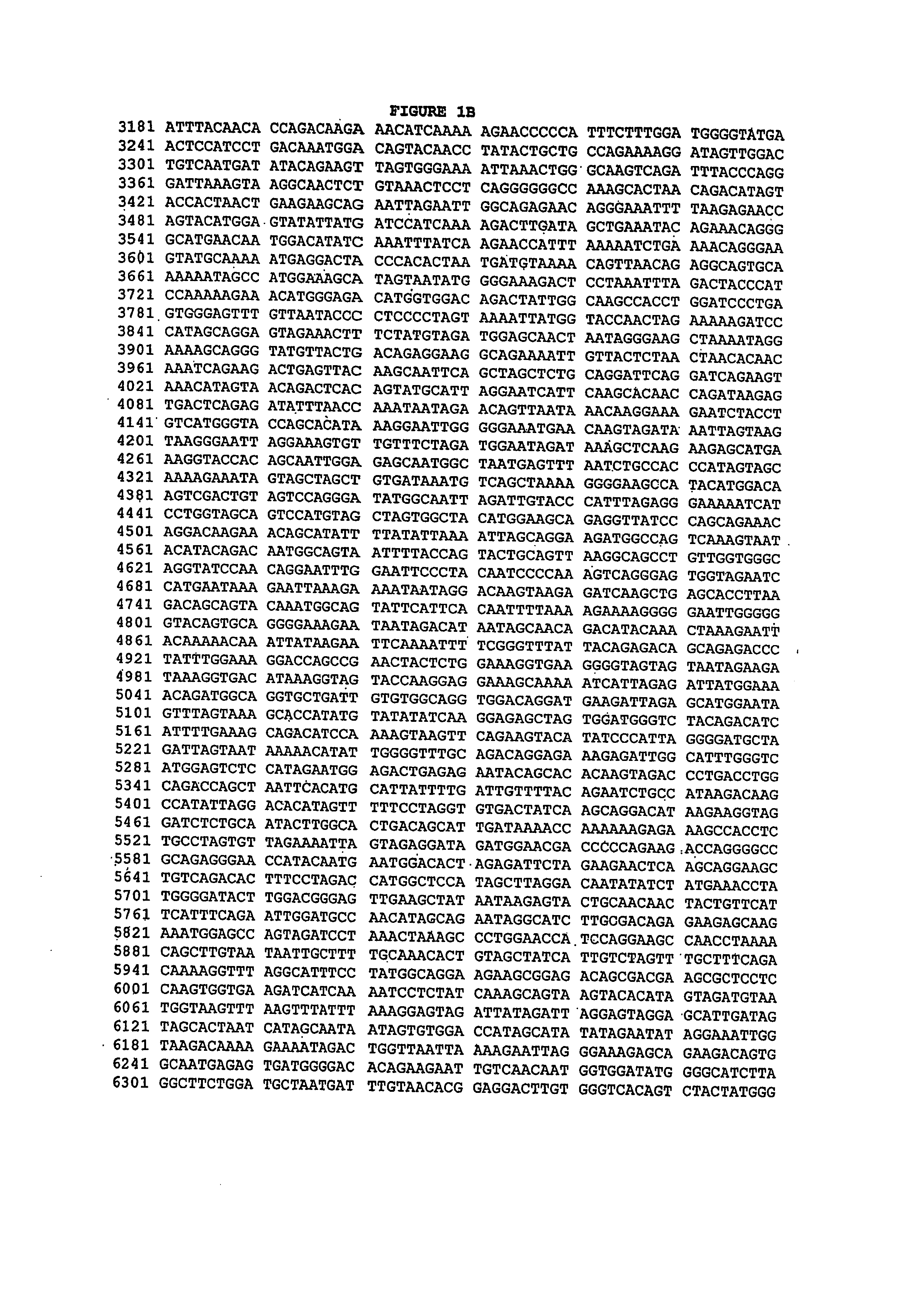Combination approaches for generating immune responses
a technology of immune response and combination approach, which is applied in the direction of immunoglobulins, antibody medical ingredients, peptides, etc., can solve the problems of ineffective vaccines and no cure for this diseas
- Summary
- Abstract
- Description
- Claims
- Application Information
AI Technical Summary
Benefits of technology
Problems solved by technology
Method used
Image
Examples
example 1
Generation of Synthetic Expression Cassettes
A. Generating Synthetic Polynucleotides
[0294] The polynucleotide sequences used in the practice of the present invention are typically manipulated to maximize expression of their gene products in a desired host or host cell. Following here is some exemplary guidance concerning codon optimization and functional variants of HIV polypeptides. The order of the following steps may vary.
[0295] First, the HIV-1 codon usage pattern may be modified so that the resulting nucleic acid coding sequence is comparable to codon usage found in highly expressed human genes. The HIV codon usage reflects a high content of the nucleotides A or T of the codon-triplet. The effect of the HIV-1 codon usage is a high AT content in the DNA sequence that results in a high AU content in the RNA and in a decreased translation ability and instability of the mRNA. In comparison, highly expressed human codons prefer the nucleotides G or C. Wild-type polynucleotide seq...
example 2
In Vivo Immunogenicity in Mice of Synthetic HIV Expression Cassettes and Polypeptides Encoded thereby
A. Immunization
[0307] To evaluate the immunogenicity of the compositions of the present invention used to induce immune response, a mouse study may be performed. The polynucleotide component (e.g., two pCMVlink-based plasmids each carrying codon optimized coding sequences for gp140 with delV2, the first coding sequence derived from SF162, subtype B, and the second coding sequence derived from TV1, subtype C), is diluted in a total injection volume of 100 μl using varying doses of DNA (0.02-200 μg). To overcome possible negative dilution effects of the diluted DNA, the total DNA concentration in each sample can be adjusted using the vector (e.g., pCMVlink) alone. Groups of 10-12 Balb / c mice (Charles River, Boston, Mass.) are intramuscularly immunized (50 μl per leg, intramuscular injection into the tibialis anterior) using varying dosages.
[0308] The mice are then immunized with ol...
example 3
In Vivo Immunogenicity Studies
A. General Immunization Methods
[0314] To evaluate the immune response generated using the compositions (comprising a polynucleotide component and a polypeptide component) and methods of the present invention, studies using guinea pigs, rabbits, mice, rhesus macaques and / or baboons may be performed. The studies are typically structured as shown in the following table (Table 3) and can be carried out using, for example, the following components: subtype B DNA—pCMVlink carrying a codon optimized coding sequences for gp140 with delV2, the coding sequence derived from SF162, subtype B; subtype C DNA—pCMVlink carrying a codon optimized coding sequences for gp140 with delV2, the coding sequence derived from TV1, subtype C; subtype B protein—oligomeric, codon optimized, gp140 with delV2, derived from SF162, subtype B polypeptide; and subtype C protein—oligomeric, codon optimized, gp140 with delV2, derived from TV1, subtype C polypeptide.
TABLE 3Protein Immu...
PUM
| Property | Measurement | Unit |
|---|---|---|
| Immunogenicity | aaaaa | aaaaa |
| Cytotoxicity | aaaaa | aaaaa |
| Strain point | aaaaa | aaaaa |
Abstract
Description
Claims
Application Information
 Login to View More
Login to View More - R&D
- Intellectual Property
- Life Sciences
- Materials
- Tech Scout
- Unparalleled Data Quality
- Higher Quality Content
- 60% Fewer Hallucinations
Browse by: Latest US Patents, China's latest patents, Technical Efficacy Thesaurus, Application Domain, Technology Topic, Popular Technical Reports.
© 2025 PatSnap. All rights reserved.Legal|Privacy policy|Modern Slavery Act Transparency Statement|Sitemap|About US| Contact US: help@patsnap.com



